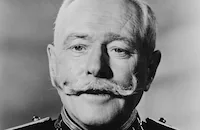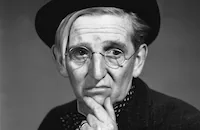Knock on Any Door (1949) is based on the critically acclaimed, best-selling 1947 novel of the same title by Willard Motley. Motley, like fellow African-American writer Richard Wright, was a product of the federally funded Writers' Project in Chicago. Persecuted during the political witch-hunts of the era, Motley fled to Mexico, where he lived until his death in 1965. Motley's novels were notable for their trenchant social critique and often frank subject matter. The multi-layered plot of Knock on Any Door features a number of motifs, including Nick Romano's bisexuality and the depiction of sadistic police officers, that had to be toned down or removed altogether in the screenplay in order to satisfy the Production Code. A sequel, Let No Man Write My Epitaph, focused on the struggles of Nick Romano, Jr., the protagonist's illegitimate son; it was made into a film in 1960.
Knock on Any Door was the first production of Santana Pictures, an independent company formed by Bogart, business manager A. Morgan Maree and producer Robert Lord. Bogart named the company, incidentally, after his beloved boat. Director Nicholas Ray was loaned out to them from RKO pictures on the strength of his recently completed debut They Live By Night (1949), also known at the time as Your Red Wagon. Their next project together was In a Lonely Place (1950), an outstanding film noir which features one of Bogart's most complex performances. Ray liked to tell a story that when it came time to film Bogart's dramatic courtroom speech, the actor balked at having to memorize such a long monologue and deliver it in one take. Ray offered to have him rehearse the scene before the camera; however, he surreptitiously let the camera roll. When Bogart delivered the speech successfully on the first try, Ray ended up using the take. However, it should be noted that the scene is broken up into several shots in the finished version of the film.
Variety described young lead John Derek as "a new bobbysoxer dream and a personality who will click with the femmes, motherly or otherwise." After appearing in mainly adventure films, he became a professional still photographer and tried his luck at directing. Although he died in 1998, he is best remembered as the husband/impresario of a succession of sex symbols: Ursula Andress, Linda Evans and Bo Derek, each of whom he directed in films that are largely forgotten today. The most successful (financially, at least) of these ventures was the Bo Derek vehicle Tarzan the Ape Man (1981).
If the piano player looks familiar, he should be; Dooley Wilson previously appeared as Sam in Casablanca (1942).
Director: Nicholas Ray
Producer: Robert Lord
Screenplay: Daniel Taradash and John Monks, Jr. Based on the novel Knock on Any Door by Willard Motley.
Cinematography: Burnett Guffey
Music: George Antheil
Editor: Viola Lawrence
Cast: Humphrey Bogart (Andrew Morton), George Macready (District Attorney Kerman), John Derek (Nick Romano), Allene Roberts (Emma), Susan Perry (Adele Patterson), Mickey Knox (Vito).
BW-100m.
by James Steffen


































